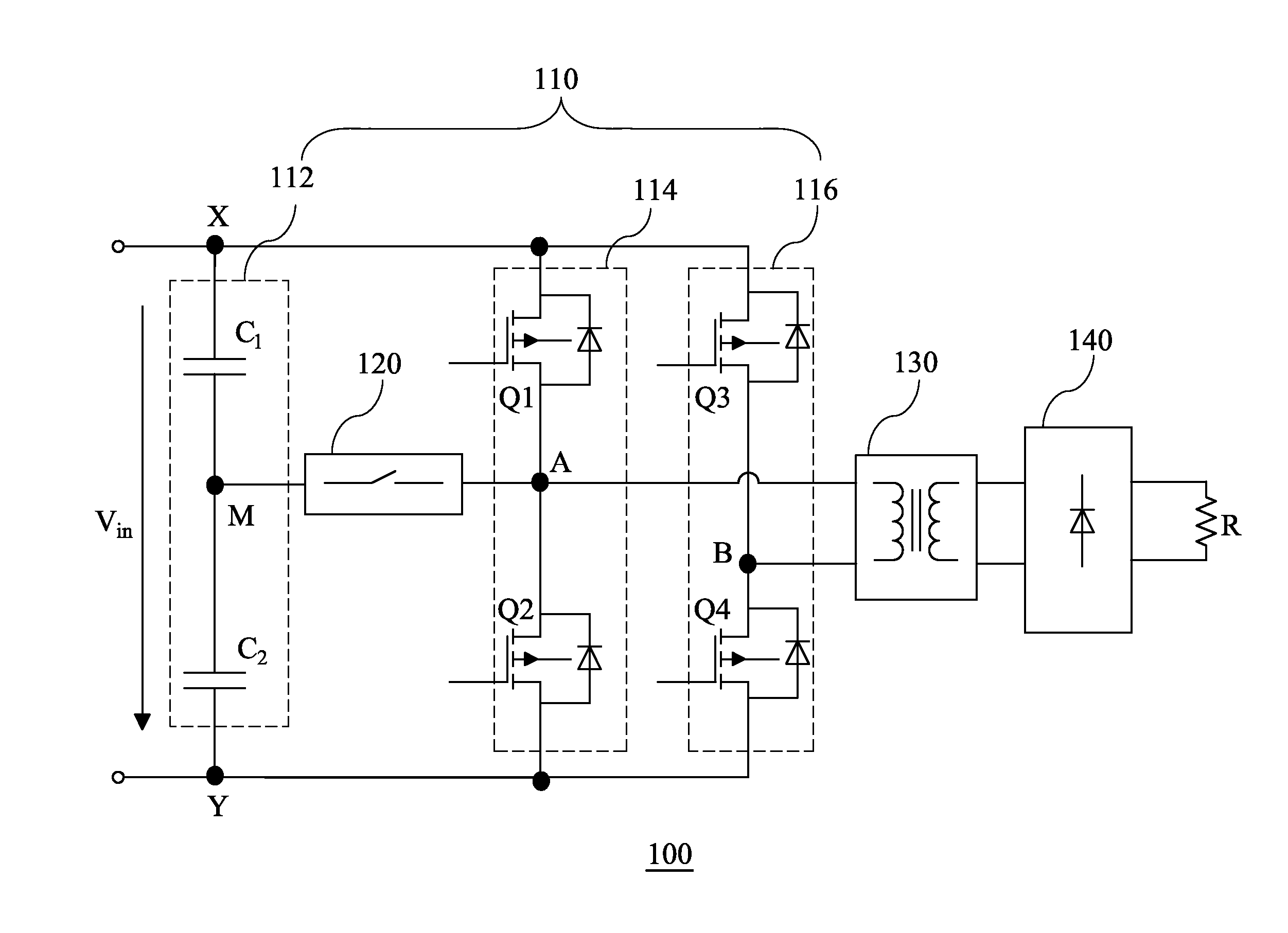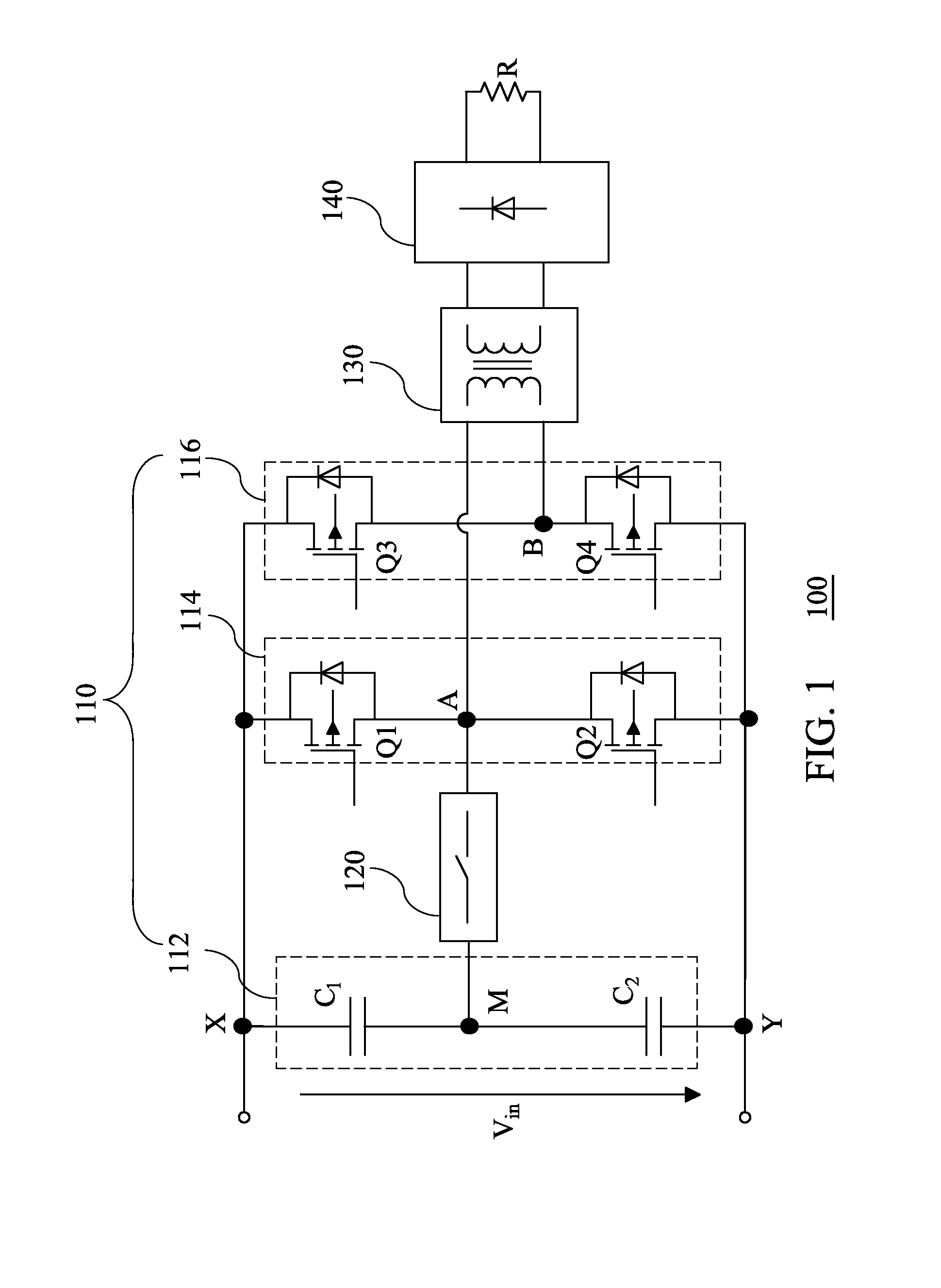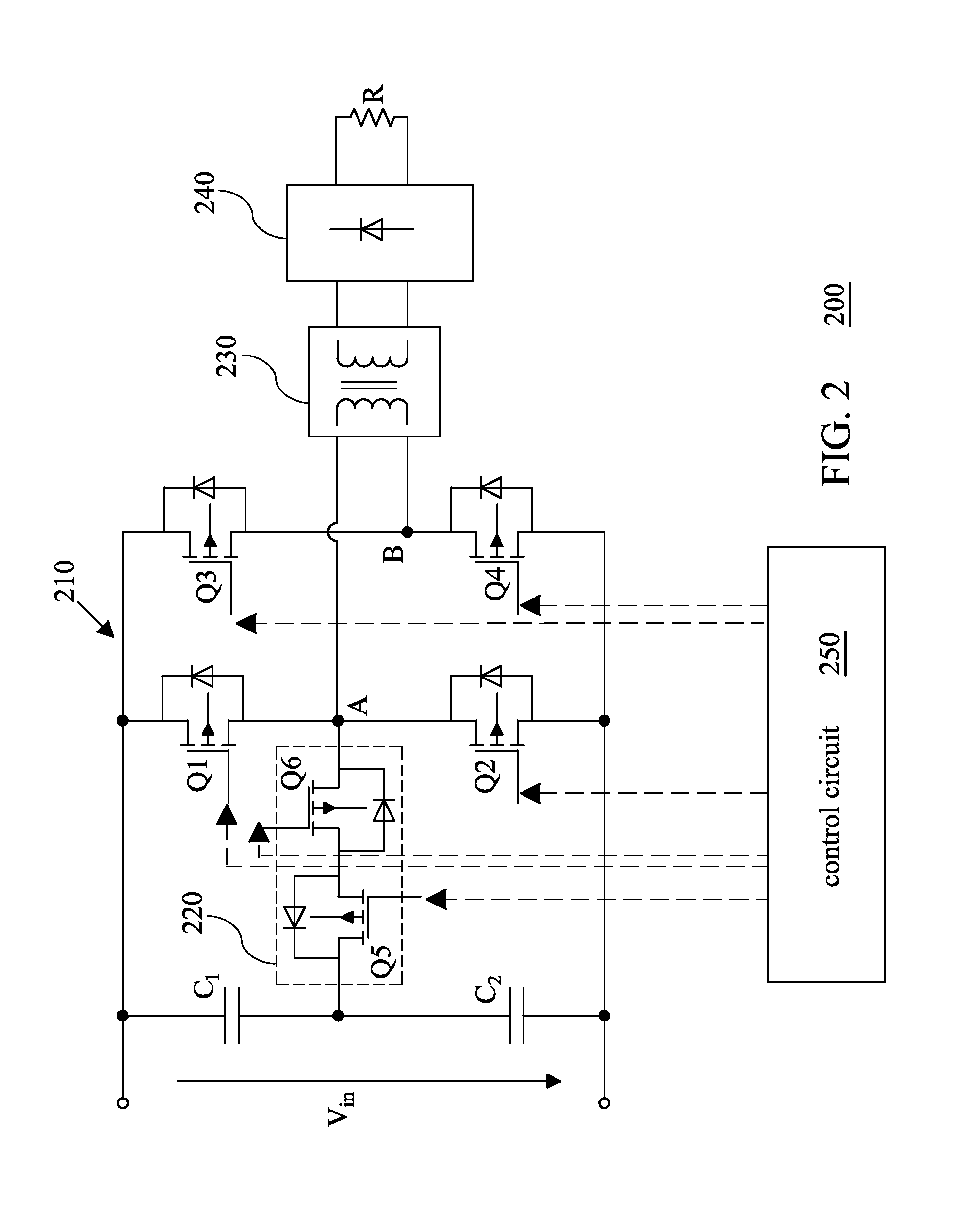Power converter and method for controlling the same
a power converter and voltage regulation technology, applied in the field of power converters, can solve the problems of complex circuitry design of power converters, difficult to ensure high conversion efficiency with a wide range of switching frequency, and inability to achieve voltage regulation for a wider range of input voltage inputted into the power converters
- Summary
- Abstract
- Description
- Claims
- Application Information
AI Technical Summary
Benefits of technology
Problems solved by technology
Method used
Image
Examples
first embodiment
[0029]FIG. 1 is a schematic diagram of a power converter according to the present disclosure. As shown in FIG. 1, the power converter 100 includes a bridge circuit (e.g., a full-bridge inverter) 110, a switch module 120, an isolation stage 130 and an output stage 140. The bridge circuit 110 has a first input terminal X and a second input terminal Y both configured for receiving an input voltage Vin, and a first output terminal A and a second output terminal B both configured for generating an output voltage VAB therebetween. The bridge circuit 110 further includes bridge arms 112, 114, and 116. The bridge arm 112 includes two capacitor units C1 and C2 connected in series at a middle point M between the first input terminal X and the second input terminal Y of the bridge circuit 110. The bridge arm 114 includes switch devices Q1 and Q2 connected in series at the first output terminal A between the first input terminal X and the second input terminal Y of the bridge circuit 110. The b...
second embodiment
[0033]FIG. 2 is a schematic diagram of a power converter according to the present disclosure. As shown in FIG. 2, the power converter 200 includes circuits that are similar to those shown in FIG. 1, and thus the circuits are not further detailed herein. Compared to the embodiment shown in FIG. 1, the switch module 220 in the power converter 200 further includes switch devices Q5 and Q6, and the switch devices Q5 and Q6 are connected anti-serially between the middle point M and the first output terminal A of the bridge circuit 210.
[0034]Moreover, the power converter 200 may further include a control circuit 250 for controlling the switch devices Q1-Q6, in which the switch devices Q1 and Q6 are switched on complementarily, the switch devices Q2 and Q5 are switched on complementarily, and the switch devices Q3 and Q4 are switched on complementarily. Notably, each of the aforementioned embodiments and following embodiments may further include a control circuit that is similar to or the ...
third embodiment
[0036]FIG. 3 is a schematic diagram of a power converter according to the present disclosure. As shown in FIG. 3, the power converter 300 includes circuits that are similar to those shown in FIG. 2, and thus the circuits are not further detailed herein. Compared to the embodiment shown in FIG. 2, the isolation stage 330 can further include a transformer Tr having a primary winding circuit connected between the first output terminal A and the second output terminal B of the bridge circuit 310, and a secondary winding circuit connected to the input terminals of the output stage 340, as illustrated in FIG. 3.
PUM
 Login to View More
Login to View More Abstract
Description
Claims
Application Information
 Login to View More
Login to View More - R&D
- Intellectual Property
- Life Sciences
- Materials
- Tech Scout
- Unparalleled Data Quality
- Higher Quality Content
- 60% Fewer Hallucinations
Browse by: Latest US Patents, China's latest patents, Technical Efficacy Thesaurus, Application Domain, Technology Topic, Popular Technical Reports.
© 2025 PatSnap. All rights reserved.Legal|Privacy policy|Modern Slavery Act Transparency Statement|Sitemap|About US| Contact US: help@patsnap.com



